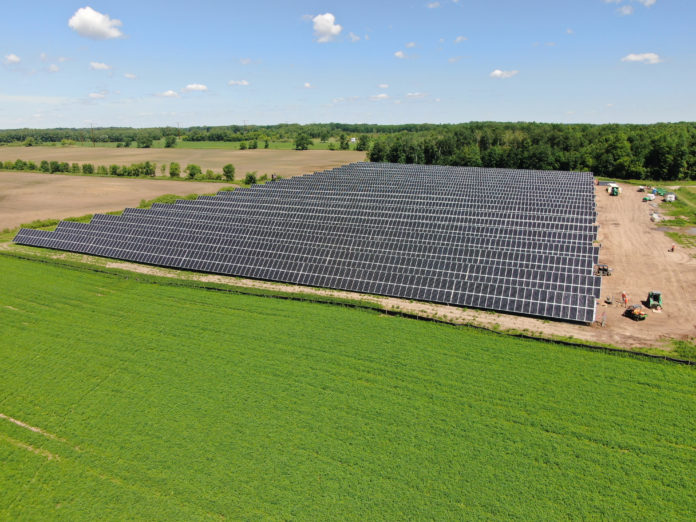A report from Forward Analytics finds that hiring local workers to construct new solar energy projects could generate twice as much economic activity in the state as relying on out-of-state labor.
Using the example of a 150 megawatt solar farm being built in rural Wisconsin, the report estimates that hiring local workers would generate about $11.8 million in economic activity in the region. If that same project were constructed by workers from out of state, the total economic activity would be between $4.6 million and $6.8 million, according to the report.
The report was commissioned by Wisconsin Infrastructure Investment Now, a construction industry lobbying organization that’s backed by construction companies and various labor groups. In a release, the organization notes that solar projects require few workers for long-term operation and maintenance once they’ve been built, meaning the “vast majority” of the economic impact from the project’s workforce occurs during the construction process.
“The study quantifies what has long been assumed, that infrastructure projects built by local workers are significantly better for the local economy,” said Dale Knapp, Forward Analytics’ director of research and analytics.
Wisconsin currently has 19 solar projects that have either been approved by the state Public Service Commission or are in the queue, the report shows. If all of those projects are built with a completely local workforce, the report estimates the total economic impact would be $195.5 million. If the workforce for those projects isn’t locally sourced, the impact is estimated at between $75.8 million and $112.9 million.
“The 19 solar farms planned for Wisconsin will cost in excess of $2.6 billion. This is a much-needed capital investment as aging electric generation plants are retired, but it is Wisconsin residents that will pay for the projects through their utility bills,” said Robb Kahl, executive director of WIIN and the Construction Business Group, in a release. “Since Wisconsin is paying for the new infrastructure, it should be Wisconsin contractors and workers that build it.”
Much of the local impact results from workers on the project spending their income in the local area, since many of the materials used in the construction process aren’t produced locally and therefore have a “negligible” economic impact. Report authors note the local impact might differ if out-of-state workers on these projects are paid at a different rate than local workers, since a lower pay would result in a smaller economic impact overall.
Despite recent growth in the industry, solar energy is a relatively small piece of the state’s energy mix, making up about 4 percent of Wisconsin’s renewable net generation in 2020. And about three-fifths of the solar power generated in the state was from small-scale solar facilities, according to the U.S. Energy Information Administration.
But if all 19 of the projects recently approved and currently in the queue go online, the state’s solar energy capacity would increase by more than 400 percent, according to the report.
See the report: https://www.wisbusiness.com/wp-content/uploads/2021/10/Solar-Project-Report-Reduced.FINAL_.pdf
–By Alex Moe






